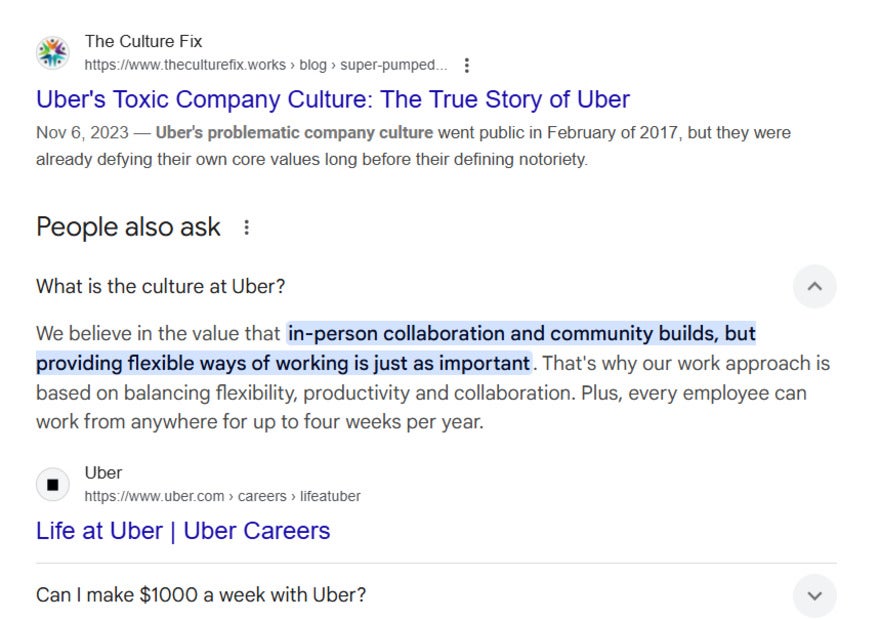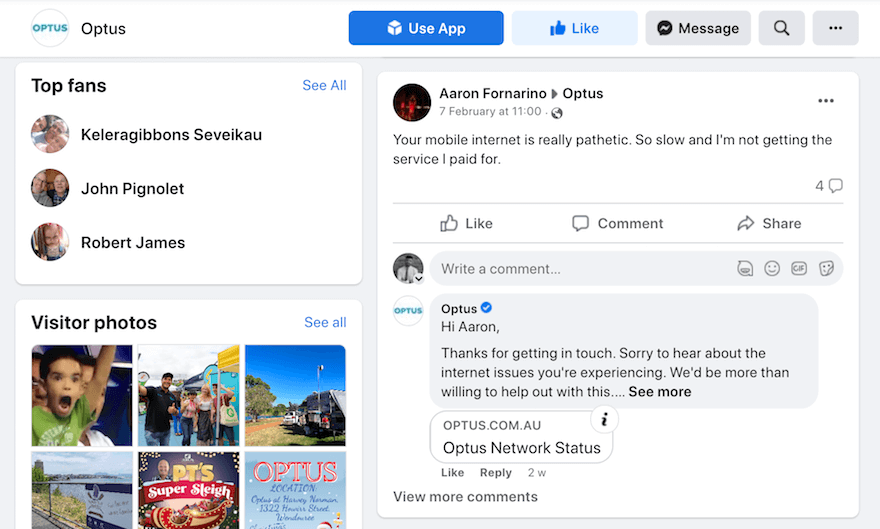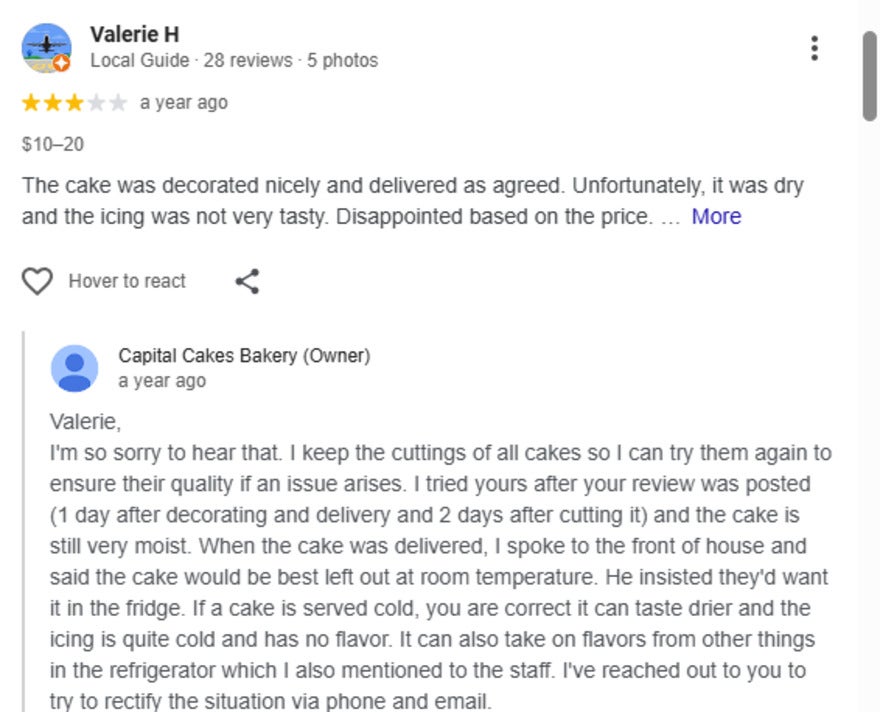SEO Reputation Management: A Beginner’s Guide
If you click to purchase a product or service based on our independent recommendations and impartial reviews, we may receive a commission. Learn more
As a small business, your online reputation is everything – it can make or break a purchase. Luckily, you have more control over this than you think. Once you know the foundations of SEO (search engine optimization), you can use it to highlight your wins and minimize the impact of negative sentiment.
Below, I cover how SEO and reputation management work together, why it matters and show you how to create a winning strategy for your business.
SEO Reputation Management: Key Takeaways🔍
- SEO and reputation management work hand in hand to benefit each other.
- It’s important to keep on top of your SEO reputation management regularly.
- Prepare for both negative and positive content about your brand, since both can rank highly.
- Social media content is indexed on Google, so it is just as influential as online sites.
What Is SEO Reputation Management?
SEO reputation management is the process of influencing your business’s online reputation through the use of SEO (search engine optimization) techniques.
The goal? To minimize the visibility of content that’s negative about your business. While maximizing the visibility – and credibility – of the stuff that’s positive.
Why Is SEO and Online Reputation Management Important?
Your business exists in a crowded, competitive space. This means that, if potential customers don’t perceive your brand to be trustworthy, high-quality and reliable, there’s no shortage of alternatives to jump ship to.
By optimizing your key pages to rank higher in search engine results pages (SERPs), you’ll also be increasing the visibility of your most positive content. This works not only to attract new customers, but also to capitalize on the positive experiences of past sales, and encourage loyalty and retention.
Brand SEO Reputation Management Example
Take Uber as an example. The taxi company has been at the center of multiple workplace culture scandals over the last decade. In response, Uber has targeted queries about these issues by updating its core pages, which include:
- Culture
- About us
- Values
- “Life at Uber” page on its Career site
It has also commissioned a number of annual reports into diversity, culture and inclusion, which also appear in the search results for these queries.

The Process of SEO Reputation Management
SEO reputation management is something you have to constantly monitor and maintain. To help you get started, here are the key steps involved:
#1. Assess your Current Reputation
Firstly, it’s important to assess the overall sentiment of your brand online. Consider all the spaces people could find you, such as:
- Organic search results: Pop your business’s name into Google, and see what comes up.
- Social media platforms: Search your brand and its products on each platform, or use social listening tools, such as Sprout Social and Hootsuite, to track related discussions.
- Third-party websites: Visit blogs and review sites, such as Trustpilot, to read reviews and comments relating to your brand.
- Conduct customer surveys to get relevant, real-time customer feedback about how they perceive and feel about your brand, products and services.
Where are conversations about your business most active? In these spaces, are there any opinions that are particularly popular?
#2. Identify Your Goals
The route you take to shift your business’s online reputation will depend on your desired outcomes. Some examples include:
- To enhance customer loyalty
- To strengthen trust and credibility
- To increase website traffic
- To increase positive reviews
To ensure your SEO reputation management plan is actively achieving your goals, you should measure relevant metrics that act as key performance indicators (KPIs).
For example, if your goal is to increase positive reviews, tracking the average star ratings and response rate across search engines and third-party review sites would be a good indicator of progress.
#3. Develop a Plan of Action
Now you know the good, the bad and the ugly of what people are saying about your brand, here’s how I’d recommend approaching different types of online coverage:
- The good: Update old pages and create content that highlights your popular products, and leverages positive reviews and user-generated content.
- The bad: Respond to reviews and provide professional customer service to keep constructive feedback under control.
- The ugly: Scandals, particularly bad media coverage, or scathing reviews, call for damage control.
#4. Continually Monitor Your Business’s Online Reputation
As your brand continues to develop and customers continue to buy from you, the flow of commentary will continue.
- Set up Google Alerts to be notified as soon as anyone mentions your brand online. You can also request to be notified whenever anyone speaks about keywords relevant to your industry, products and key people.
- Monitor online review sites to stay on top of what people are saying about your business, products and services there.
- Conduct regular market research – like sending out questionnaires, and running focus groups – to get immediate, first-hand insights into how your customers feel about your brand.
Top 6 Tips for Effective SEO Reputation Management
Read on for my top tips for effective reputation management SEO.
#1. Create Quality Content
Creating high-quality content is the most effective trick for ranking in Google, but focusing your content around negative keywords can also improve your business’s reputation.
Why? Because publishing compelling, engaging and informative content:
- Builds trust and credibility with your audience – establishing your brand as an authority in the space, to be quoted and relied upon throughout your industry.
- Provides value to your audience – making them more likely to share and talk about your content.
- Boosts your rankings in search engine results – allowing you to push up the content about your brand that you want to be there, and push down the content you don’t.
Find Out More
- Learn more about the factors that influence Website Credibility – we list the top 30 factors in our guide.
- Need some help creating top notch content? Check out our tips on Writing for the Web.
#2. Don’t Ignore Social Media
Social media is a safe space for consumers to share their opinions on their favorite (and not so favorite) brands. To get involved in the conversation, having business social media accounts is vital.
Plus, as of July 2025, Google officially indexes Instagram content in SERPs. With the other social media platforms already having visibility, you stand a good chance at getting your social media posts to rank highly.

What’s more, 79% of consumers expect brands to respond within a day of reaching out over social media – which means responding quickly, and with empathy, is vital.
To make social media a fundamental part of your online reputation management strategy, be sure to:
- Engage regularly with your audience across all your business’s social platforms – responding to and liking comments, as well as posting regularly.
- Share content from your blog or articles you’ve been featured in positively, to encourage engagement.
- When it comes to addressing less-than-favorable feedback, be prompt – and be professional!
#3. Respond To ALL Reviews
Negative reviews are, unfortunately, part and parcel of doing business. But how customers will perceive your brand won’t just swing on those bad reviews alone – but on how you respond to them.

Maintain empathy when responding to negative reviews. Understand their pain points, their frustrations, their disappointment – then respond in a calm, polite and friendly manner to assuage any doubts.
Of course, you should also respond to the good reviews, too. It shows you’re on top of things, and that you respect the time your customer has taken to leave you some glowing feedback.
#4. Build Relationships With Customers and the Community
You’ll gain a lot more respect from your customers by throwing yourself into their online community. Engage with them authentically, always maintain transparency and keep a genuine interest in their opinions.
To show your customers how much you value them, I recommend:
- Hosting events and workshops that align with your industry and your brand’s values.
- Rewarding your most loyal customers. Whether it’s through the odd freebie, an occasional discount or deal, or creating a loyalty program that gives back to your most engaged followers, treating your best customers right is an excellent way of building lasting relationships within your community.
#5. Utilize Influencers
There’s a range of social media influencers – micro, macro, nano and mega – just waiting to promote your brand to an engaged, niche segment of your audience.
By finding the right influencers for your brand, you can get plenty of positive online coverage, which will boost your image and SEO.
For those on a budget, you’ll be glad to know that micro influencers with fewer followers come cheaper – although often with just as much (or more) clout in the space as their macro counterparts.

#6. Use Online Reputation Management SEO Tools
Your reputation management SEO strategy should be built around everything I discussed above – from regularly engaging with your audience, to responding to customer reviews, to creating high-quality content for your website and social channels.
But, if you don’t have the time or the resources to do all that efficiently, there’s still hope – and it comes in the form of online reputation management tools.
These tools do the hard work for you; tracking mentions and reviews of your brand across platforms and websites. A few I recommend are:
- BuzzSumo
- BrandMentions
- The Brand Grader
- Similarweb
- Mention

Summary
This guide to SEO and reputation management can feel like a lot to take in, but the bottom line is this: how people perceive your brand isn’t just important – it’s absolutely integral to your business’s present and future success – and the long-term sustainability of your approach.
So, keep track of what people are saying about your brand and find ways to build trust in your online store or website. The quicker you step in, the less impact negative feedback will have, and the brighter your positive coverage will shine.
Leave a comment